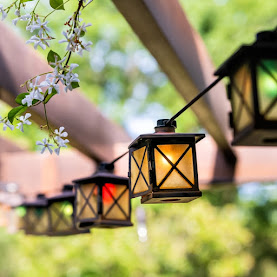1. For the History
Rich history, legends and myths surround this atmospheric city. From Edinburgh Castle, which looks down on it from above and its history begins in the 11th century, to the cafe where author JK Rowling started writing Harry Potter, the city has a lot to tell. Start on the Royal Mile, the central route in the Old Town that connects the castle with Holyrood Palace, the British royal residence in Scotland. Along it, discover the vertical narrow alleys that may lead to small squares and interesting shops. Not too far away is Greyfriars Kirkyard. If you look carefully at the tombstones, some names may look familiar: they are characters from the mythical world of Harry Potter, as the author was inspired by their names by walking here. The nearby Elephant House Cafe (21 George IV Bridge) is said to be where JK Rowling wrote many of the pages of the first books in the Harry Potter series.
2. For the parks and the riverside path
The city of Edinburgh has one hundred and twelve parks and figures show it has more trees per inhabitant than any other in the UK. One of the nicest parks is Holyrood Park, behind the royal palace. It may be that its highest point, called Arthur's Seat, is only 251 meters high, but it offers a very nice view of the city and the surrounding area. Edinburgh Royal Botanic Gardens is also a must for strolling. But you will see most of the locals along the river that runs through Edinburgh. The Water of Leith Walkway connects many areas of Leith and residents use it to walk to work or from one point to another. It moves along the water through the trees and nature, is about 20 kilometers long and is also suitable for bicycles.
3. For museums
A stunning collection of works of art graces the halls of the National Gallery of Scotland (The Mound, Princes Street), which also has three buildings, both dedicated to modern art (73 & 75 Belford Road) and portraiture (1 Queen Street) . The National Museum of Scotland (Chambers Street) is also worth visiting. The multi-storey building houses many collections from different periods, starting from ancient Egypt and the Industrial Revolution to the history of the Kingdom of Scotland and the effort to explore space. Many of the exhibits are interactive and will fascinate children as well. Note that all of the above, like most museums in the city, have free admission.
4. About the festivals
It is considered the city of festivals and the main reason is the Edinburgh Fringe Festival, the biggest arts festival in the world that takes place every August since 1947. Then its population (about 500,000) doubles due to visitors, while hundreds performances of all kinds take place in many parts of it. But there is not only this festival. Dozens of smaller and larger events are organized in Edinburgh, mainly in spring and summer, offering good reasons to visit. The International Book Festival and the International Film Festival also take place in August, while in July the city fills with jazz and blues tunes, due to the respective festival that has been organized since 1978.
Another spot not to be missed is Cramond Island. At that point you will clearly see the waters of the sea change direction and at low tide reveal the elevated path for this piece of land, which is about 1200 meters from the shore. At high tide the path is covered with water and Cramond becomes an island again. The speed at which this happens has left many visitors stranded on the island until the next low tide, so it's a good idea to calculate the times before you set out.
Note that in Edinburgh the days are very long in the summer (the sun almost never sets, except for a slight darkening of the sky for a few hours after midnight) and very short in the winter (the sun sets just before 4pm and rises at 8 am).
























.jpeg)


0 Comments